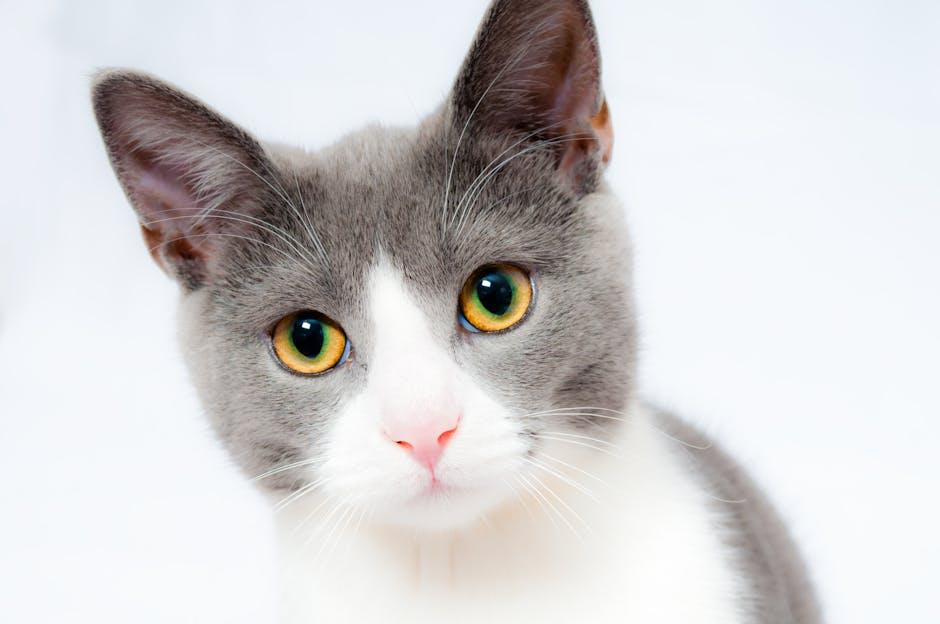Creating a serene sanctuary for your feline friend is essential to their well-being and happiness. “My cat cage” is more than just a containment space; it’s a world where comfort meets security, offering your furry companion a place to relax, play, and observe their surroundings safely. Whether you’re introducing a new pet into your home, as seen by others who have carefully paired unfamiliar animals [[2]][[3]], or simply looking to provide your cat with their personal retreat, understanding the design and functionality of a cat cage can transform your pet’s environment. Join us as we explore the features and benefits of the ideal cat cage, ensuring a perfect blend of safety and freedom for your beloved pet.
Table of Contents
- Choosing the Perfect Cat Cage for Your Feline Friend
- Essential Features to Look for in a Cat Cage
- Creating a Comfortable Environment Inside Your Cat Cage
- Top Maintenance Tips for Keeping Your Cat Cage Clean and Safe
- Q&A
- Concluding Remarks

Choosing the Perfect Cat Cage for Your Feline Friend
Choosing the right cage for your cat is a crucial decision that can significantly enhance your pet’s comfort and safety. With numerous options available on the market, it’s essential to consider factors such as size, material, and ease of cleaning. A spacious cage ensures that your feline friend has enough room to stretch and turn comfortably, preventing discomfort during longer journeys or when being contained for any reason.
When it comes to materials, durability and ventilation are paramount. Opt for cages made from high-quality materials such as hard plastic or metal that offer robustness without sacrificing airflow. These materials can withstand scratching and chewing, making them ideal for curious or anxious cats. Additionally, ample ventilation ensures proper air circulation, keeping your cat cool and comfortable.
Ease of cleaning is another critical aspect. Look for cages with removable trays or easy-to-wipe surfaces. This design feature makes maintenance simple, ensuring that you can keep your cat’s space hygienic without hassle. For convenience, consider models that are easy to dismantle and reassemble, which can be particularly beneficial when storing or traveling with the cage.
Here is a quick comparison of potential material choices and their benefits:
| Material | Durability | Ventilation |
|---|---|---|
| Hard Plastic | Extremely Durable | Good with Proper Design |
| Metal | Highly Durable | Excellent |
| Fabric with Mesh | Less Durable | Excellent |
When selecting the perfect cat cage, also consider your specific needs and lifestyle. If you’re a frequent traveler, portability and weight might be crucial for you. In this case, lightweight and foldable designs can be a great advantage. Evaluate whether the cage can seamlessly fit your vehicle or if it comes with convenient carrying handles or straps. With these considerations in mind, you’re well on your way to choosing a cat cage that satisfies both your and your feline friend’s requirements.
Essential Features to Look for in a Cat Cage
When selecting a cat cage, it’s crucial to prioritize features that ensure both safety and comfort for your feline companion. Your choice should cater to the cat’s unique needs, providing a sanctuary that blends seamlessly into your home environment. Durability tops the list of must-have features; a well-constructed cage is essential to withstand energetic cat antics without compromising on safety. Look for cages made of high-quality materials such as stainless steel or reinforced plastic, ensuring they’re long-lasting and resistant to wear and tear.
Another critical feature is adequate space. Cats thrive with room to move, so the cage should be spacious enough to accommodate stretching, playing, and all-important cat naps. It’s beneficial to choose a cage that allows you to add comfort items like a bed, litter box, and feeding area without overcrowding. Convertible or expandable cages can be a smart option if you anticipate changes in your cat’s activity level or number.
Accessibility is also important for both the cat and the owner. Multiple entry points make it easier for you to clean the cage and for your cat to enter and exit freely. Look for secure yet easy-to-operate latches to ensure your cat remains safely inside when needed. Additionally, a cage with built-in storage or accessories for toys and litter supplies can enhance convenience, keeping everything your cat requires within easy reach.
- Durable materials such as stainless steel or reinforced plastic
- Spacious design for comfort and activity
- Multiple access points with secure latches
- Built-in storage for essentials
| Feature | Benefit |
|---|---|
| Durability | Long-lasting and safe for active play |
| Space | Ensures comfort with added elements like beds |
| Accessibility | Easy cleaning and entry for the cat |

Creating a Comfortable Environment Inside Your Cat Cage
To ensure your feline friend feels at home within their designated space, prioritizing a cozy and secure environment inside the cat cage is essential. Start by lining the cage with a soft, warm blanket or cushion that smells like home. This familiar scent will soothe your cat and help reduce anxiety. Choose materials that are easy to wash so that you can maintain cleanliness without much hassle. Offering a variety of textures such as fleece or microfiber can make the area more inviting.
Engaging your cat with stimulating elements is another step toward creating a favorable atmosphere. Include a few toys like a small plush mouse or a ping pong ball that they can bat around. Rotating these toys periodically will keep their interest alive. Additionally, consider adding a small scratching post if space permits, as this not only provides entertainment but also helps them maintain their claws and mark their territory without resorting to the cage itself.
Lighting plays a significant role as well; ensure the cage is in a spot where your cat can enjoy natural light without being exposed to the harsh sun directly. If possible, position the cage near a window so they can observe the world while relaxing. However, it’s equally important to provide a cover or shade cloth to offer them privacy and a sense of security when needed. This creates a balance that caters to your cat’s mood swings throughout the day.
Airflow is an often-overlooked aspect of a cat’s comfort. Make sure the cage is well-ventilated to prevent overheating, as pointed out in discussions about ensuring the comfort and safety of cats
Top Maintenance Tips for Keeping Your Cat Cage Clean and Safe
Cleaning your cat’s cage is vital to ensure not only the health and happiness of your feline friend but also to maintain a pleasant environment for everyone in your home. Start with a routine cleaning schedule that includes daily, weekly, and monthly tasks. Daily tasks might include removing food and water bowls for washing and wiping down surfaces to prevent the build-up of grime. Weekly, give the entire cage a more thorough cleaning, including replacing bedding or fleece liners, which can harbor odors if left unchanged. Monthly, aim to deep-clean the cage by removing everything and scrubbing the cage walls, ensuring every nook and cranny is spotless.
Use pet-safe cleaning products to protect your cat from any harmful chemicals. Vinegar mixed with water is a great natural option that is both effective and non-toxic. After scrubbing surfaces, make sure to rinse thoroughly, as even pet-safe products can irritate if residue remains. Dry the cage completely to prevent rusting or mildew formation. Utilize absorbent materials such as paper towels followed by a microfiber cloth for streak-free cleaning.
Keeping your cat’s living space comfortable requires more than cleanliness. Ensure that the cage is safe and secure by regularly inspecting it for any signs of wear or damage. Look for loose wires, sharp edges, or any gaps that a curious cat might exploit to escape. Repair or replace parts promptly to maintain the cage’s integrity. Additionally, provide plenty of entertainment options, like sturdy toys and a clean scratching post, to keep your cat physically and mentally stimulated.
Lastly, consider the arrangement of the cage’s interior. Create a cozy and inviting atmosphere by varying the layout occasionally. Cats appreciate a change of scenery too, and rearranging toys, bedding, and other items can make the environment enriching. Be mindful of airflow and lighting conditions; place the cage in a well-ventilated area with access to natural light, as this can greatly benefit your cat’s wellbeing.
Q&A
Q&A: All About My Cat Cage
Q1: What is the primary purpose of a cat cage?
A: A cat cage serves several essential functions, including providing a secure space for your cat when traveling, ensuring safety during vet visits, and assisting with behavioral training. It can also be used as a temporary refuge to keep your cat separated from other animals or during events that might cause stress.
Q2: How can I make my cat more comfortable in a cage?
A: To help your cat feel at ease, ensure the cage is spacious enough for movement. Lining it with a soft blanket or towel that carries familiar scents can make it more inviting. Regularly introducing your cat to the cage in a non-stressful environment will familiarize them with it and reduce anxiety. You could also place a favorite toy or a few treats inside to create a positive association.
Q3: What features should I look for when selecting a cat cage?
A: When selecting a cage, consider durability, size, and ventilation. A cage must be sturdy to withstand any escape attempts while being large enough for the cat to stand, turn around, and lie down comfortably. Adequate ventilation is crucial to ensure airflow and prevent overheating, especially if the cage will be used outdoors or during travel.
Q4: Are there creative alternatives to traditional cat cages for home use?
A: Absolutely, there are several innovative solutions you can explore. Outdoor cat enclosures or ‘catios’ provide safe outdoor spaces for cats to enjoy the fresh air and watch wildlife without the risk of wandering off. You can search for creative ideas like “cat yards” or “cat spaces” to find something suitable for your home environment [[3]].
Q5: Can a cat cage be part of a cat-friendly practice?
A: Yes, indeed. Emphasizing a cat-friendly environment includes having cages that are clean, comfortable, and situated in quiet areas to minimize stress. The concept extends to veterinary practices, where designing the space to accommodate cats’ unique needs is becoming more prevalent [[1]].
Q6: How often should I clean my cat’s cage?
A: Regular maintenance is crucial for your cat’s health and well-being. Clean the cage once a week or more frequently if needed, especially after travel or if the cage has been soiled. Use pet-safe cleaning products to avoid irritation to your pet and let the cage air out before use.
Q7: What should I avoid doing when using a cat cage?
A: Avoid using the cage as a form of punishment, as this can create a negative association for your cat. Never leave your cat in the cage for extended periods without access to water and a litter box, as this can cause distress or physical harm. Lastly, ensure the cage is securely latched to prevent accidental escapes.
Concluding Remarks
the journey of finding the perfect cat cage is more than just selecting a piece of equipment; it’s about ensuring the well-being and happiness of your feline companion. By understanding your cat’s specific needs and preferences, you can create a safe haven that caters to their nature and curiosity. As you embark on this venture, remember that your choice will not only provide security but also enhance the quality of life for your beloved pet. Let your love for your furry friend guide you in creating a sanctuary where they can thrive, play, and relax. Ultimately, a well-chosen cat cage becomes a gateway to a world full of peace and comfort—for both you and your cat.







0 Comments